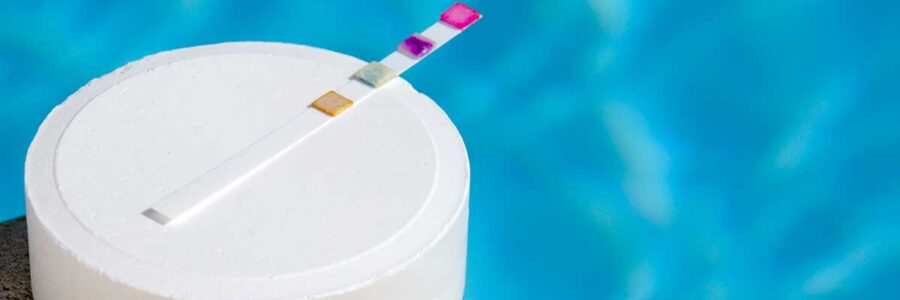Many love dipping in the pool, especially during the hot summer months. But have you ever considered the health risks of chlorine used to keep pools clean? While chlorine effectively eliminates harmful bacteria and viruses, it can also pose significant health risks if absorbed by your body.
Extended exposure to chlorine in swimming pools can lead to various health issues, including skin irritations, disruptions to your body’s microbiome, thyroid problems, and even an increased risk of cancer.
To better understand the toxicity of swimming in chlorinated pools, let’s take a closer look! 🌊
Surprising Results from Chlorine Level Tests
We conducted an EPA-approved test to measure the chlorine levels in a community swimming pool, and the results were quite surprising! Using a chlorine testing strip, we assessed how much chlorine our skin would absorb during a swim.
Here’s what we discovered:
- The initial chlorine level in fresh pool water was around 0.4-0.6 ppm, considered low but within the normal range.
- After placing my hand in the water sample for 30 seconds, the chlorine level dropped to about 0.1 ppm, indicating that the skin absorbed or reacted with roughly 80% of the chlorine.
Tips to Minimize Chlorine Exposure
To keep yourself and your family safe from the harmful effects of chlorine, here are some useful tips:
✅ Pre-Swim Shower: Shower before swimming helps reduce disinfection byproducts (DBPs) on your skin, which can react with chlorine.
✅ Apply Coconut Oil: Using coconut oil on your skin is a natural barrier against chlorine absorption.
✅ Shorten Pool Time: Limiting the amount of time spent in chlorinated water reduces the amount of chlorine your skin can absorb.
✅ Swim Less Often: Restricting swimming in chlorinated pools to once a week or less can significantly lower chlorine exposure.
✅ Post-Swim Shower: Rinsing off with soap and water immediately after swimming helps remove any remaining chlorine from your skin.
By following these guidelines, you can still enjoy your pool time while minimizing the health risks of chlorine exposure. Stay safe, and make the most of your summer!
Spreading awareness about the dangers of chlorine in swimming pools and offering practical tips to reduce exposure can help you and your family maintain a healthier, non-toxic lifestyle. Enjoy swimming responsibly and stay informed about your health!
References:
- ERIC W. MOOD, M.P.H. Effect of Free and Combined Available Residual Chlorine upon Bacteria in Swimming Pools*.Lecturer in Public Health, Yale University, and Director, Bureau of Environmental Sanitation, New Haven Health Department, New Haven, Conn.https://www.ncbi.nlm.nih.gov/pmc/articles/PMC1528454/pdf/amjphnation01019-0088.pdf
- Ratajczak, Katarzyna, and Aneta Pobudkowska. “Pilot Test on Pre-Swim Hygiene as a Factor Limiting Trihalomethane Precursors in Pool Water by Reducing Organic Matter in an Operational Facility.” International Journal of Environmental Research and Public Health, vol. 17, no. 20, Oct. 2020, p. 7547. PubMed Central, https://doi.org/10.3390/ijerph17207547.
- Lin, Tzu-Kai, et al. “Anti-Inflammatory and Skin Barrier Repair Effects of Topical Application of Some Plant Oils.” International Journal of Molecular Sciences, vol. 19, no. 1, Dec. 2017, p. 70. PubMed Central, https://doi.org/10.3390/ijms19010070.


